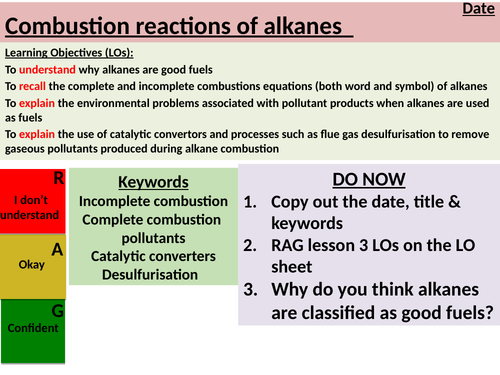


A structured lesson including starter activity, AfL work tasks on the combustion of alkanes. This lesson is suitable for the AQA specification
By the end of this lesson KS5 students should be able:
- To understand why alkanes are good fuels
- To recall the complete and incomplete combustions equations (both word and symbol) of alkanes
- To explain the environmental problems associated with pollutant products when alkanes are used as fuels
- To explain the use of catalytic convertors and processes such as flue gas desulfurisation to remove gaseous pollutants produced during alkane combustion
All questions come with answers
Declaimer: Please refrain from purchasing this popular resource for an interview lesson or a formal observation. This is because planning your own lessons, including using your own lesson PowerPoints, is a fundamental skill of a qualified/unqualified teacher that will be assessed during the scenarios outlined above
Something went wrong, please try again later.
Excellent resource, received very well by the class. Covered all bases in the specification.
Report this resourceto let us know if it violates our terms and conditions.
Our customer service team will review your report and will be in touch.